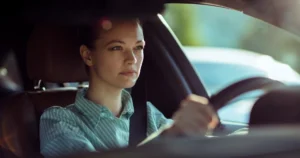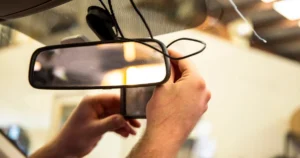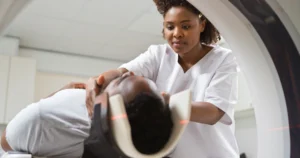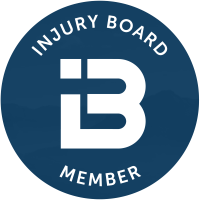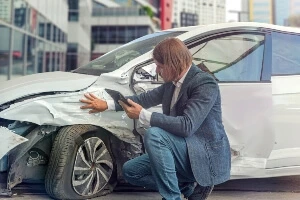 Sideswipe accidents along South Bend’s busy streets can cause significant damage and serious injuries. These crashes often occur when drivers fail to stay in their lane and scrape up against the side of another vehicle in the next lane over. While this type of crash may sound minor, “bumping” into another car at high speed can result in devastating consequences.
Sideswipe accidents along South Bend’s busy streets can cause significant damage and serious injuries. These crashes often occur when drivers fail to stay in their lane and scrape up against the side of another vehicle in the next lane over. While this type of crash may sound minor, “bumping” into another car at high speed can result in devastating consequences.
Table of Contents
- What Is a Sideswipe Accident?
- How Is Fault Determined in South Bend Sideswipe Collisions?
- Who Is Typically Liable in Lane Change Sideswipe Accidents?
- What Are The Most Common Sideswipe Crash Injuries?
- How Do Insurance Companies View Sideswipe Accident Claims?
- What Steps Should You Take To Avoid South Bend Sideswipe Accidents?
- Injured In A Car Accident? Contact Our Trusted Firm Today
At Pfeifer, Morgan & Stesiak, our experienced South Bend car accident attorneys have helped countless victims navigate the road to recovery. Our dedicated legal team is prepared to investigate the crash that caused your injuries and identify the party or parties responsible. We fight tirelessly for our clients, protecting their legal interests and working to secure full and fair compensation. Contact us today to discuss your situation and find out if you may have a case. Alternatively, you can fill out our confidential online form and request one of our knowledgeable lawyers to reach out to you. Initial consultations are completely free, and there are no upfront costs or fees when we represent you.
Request your FREE case review today. Call: (574) 444-0741
What Is a Sideswipe Accident?
A sideswipe accident occurs when the side of one vehicle makes contact with the side of another vehicle traveling in the same or opposite direction. These collisions typically happen when drivers:
- Drift out of their designated lanes
- Attempt unsafe lane changes without proper signaling
- Fail to check blind spots before changing lanes
- Misjudge the space between vehicles while merging
- Navigate tight roadways without proper caution
- Aggressive driving behaviors like weaving through traffic
- Inadequate lane markings or road construction
Unlike head-on or rear-end collisions, these accidents may initially seem less severe, but they can lead to serious consequences. The impact can cause drivers to lose control, potentially triggering secondary crashes with other vehicles, fixed objects, or pedestrians.
How Is Fault Determined in South Bend Sideswipe Collisions?
Determining who may be at fault for sideswipe car accidents is often challenging. First responders and insurance investigators will conduct a thorough investigation of the events leading up to the crash. Insurance adjusters and legal teams will also thoroughly examine evidence, including the police report, witness statements, vehicle damage patterns, traffic camera footage and electronic data from vehicles. This evidence helps investigators establish which driver may have violated traffic laws or failed to exercise reasonable care.
Indiana follows a modified comparative fault system, which means you can recover damages as long as you are less than 51 percent responsible for the accident. However, your compensation may be reduced by your percentage of fault. This makes professional legal representation important, as insurance companies often attempt to shift blame to minimize their payout.
Who Is Typically Liable in Lane Change Sideswipe Accidents?
In lane change accidents, liability typically falls on the driver who initiated the unsafe maneuver. Multiple parties may often share responsibility for a sideswipe crash, depending on the specific circumstances.
Parties who may be liable, or partially liable, for a sideswipe crash include:
The Driver Changing Lanes
The driver attempting to change lanes has a legal duty to check for approaching traffic to ensure they can do so safely before proceeding. At a minimum, the reasonable measures a driver should take before changing lanes includes signaling, checking blind spots, and yielding to vehicles already traveling in the target lane. When drivers fail to take these precautions, it can lead to a crash. The lane-changing driver in this situation usually bears primary liability for any resulting damages.
The Driver in the Original Lane
Though less common, the driver maintaining their original lane may share liability, especially if they were speeding, driving erratically, or failed to yield when appropriate. For example, if a driver deliberately accelerates to prevent another vehicle from changing lanes after a proper signal was given, they may be partially responsible for the subsequent collision.
Commercial Vehicle Companies
When commercial vehicles, like trucks or delivery vans, are involved in sideswipe accidents, more than the truck driver may be at fault. In some cases, these drivers’ employers may share liability under vicarious responsibility laws. Companies are required to provide their drivers proper training. Trucking companies are also required to follow federal regulations, including ensuring their drivers take adequate rest periods, and properly maintaining their vehicles. These steps help to prevent sideswipe crashes with commercial trucks resulting from driver fatigue, blind spot issues, or mechanical failures.
Government Entities
Although more rare, poor road design, inadequate lane markings, or improper construction zone setups may contribute to sideswipe collisions. When these factors play a role, the government agency responsible for road maintenance may bear partial liability for creating dangerous conditions that led to the accident.
What Are The Most Common Injuries Caused by Sideswipe Crashes?
Sideswipe accidents can result in a range of injuries that vary in severity depending on impact force, vehicle safety features, and passenger positioning at the time of collision. While often less catastrophic than head-on crashes, these lateral impacts can still cause significant trauma requiring medical attention and potentially leading to long-term complications.
- Whiplash and neck injuries from sudden lateral forces
- Shoulder and arm trauma from side impact or bracing against surfaces
- Head injuries including concussions from striking windows or door frames
- Chest contusions from impact with door panels or seatbelts
- Rib fractures, particularly on the side of impact
- Knee and lower extremity injuries from collision with door components
- Soft tissue injuries including sprains, strains, and bruising
- Facial lacerations from broken glass or airbag deployment
- Psychological impacts including anxiety, PTSD, and driving phobias
- Spinal injuries ranging from minor disc issues to more severe spine damage
How Do Insurance Companies View Sideswipe Accident Claims?
Insurance companies employ several strategies to try to reduce payouts after a sideswipe crash involving one of their policyholders. Remember, their goals do not align with yours. Their focus is on protecting their bottom line, which means paying as little out on a claim as possible.
While they must adhere to certain laws, their adjusters are trained to look for valid reasons to devalue or deny claims. These are a few of the ways insurance companies will look for evidence that could minimize what they pay for your damages:
- Scrutinizing damage patterns to verify consistency with your account
- Searching vehicle history for pre-existing damage
- Reviewing police reports for contradictory statements
- Investigating delayed reporting as potential fraud
- Examining lane change protocols and signal usage
- Checking your driving record for similar claims
- Disputing injury causation in low-impact collisions
- Pushing for shared fault determinations when evidence is limited
- Questioning treatment necessity for any medical claims
- Analyzing social media for contradictory post-accident activities
Tips for Avoiding a South Bend Sideswipe Collision
There are measures you can take to help you avoid being involved in or causing a sideswipe collision. The key is driving defensively and utilizing these preventative measures consistently:
Maintain Proper Lane Position
Stay centered in your lane and avoid drifting toward lane markings, particularly when navigating narrow downtown streets or construction zones. Many newer model vehicles come equipped with lane keeping assist systems (LKAS), which give audible warnings when you drift out of your lane. However it is important to recognize that over time, you may become more accustomed to the sound of these warnings and may even tune them out. Regardless what safety systems your vehicle has, remember you are responsible for focusing on the road and not drifting out of your lane.
Check Blind Spots Before Changing Lanes
Always perform a thorough blind spot check before executing any lane change. Relying solely on your vehicle’s mirrors could cause you to miss vehicles traveling in your vehicle’s blind zones.
Use Turn Signals Consistently
Activate your turn signal at least 100 feet before changing lanes or turning to give other drivers adequate time to anticipate your movements.
Avoid Distracted Driving
Keep your attention fully focused on the road and eliminate distractions like texting, adjusting entertainment systems. As a driver, you have a legal duty to avoid engaging in any activity that diverts your eyes or mental focus from traffic conditions.
Be Cautious in Merge Areas
Approach merging zones with heightened awareness, particularly on busy thoroughfares like US-31 or I-80/90 where traffic patterns can change suddenly.
Maintain Safe Following Distance
Maintain adequate space between your vehicle and vehicles ahead of you. This distance gives you more time to react and use evasive actions if another driver makes an unexpected lane change.
Adjust Driving During Adverse Weather
Reduce speed and increase following distance during inclement weather, including during South Bend’s snowy, rainy or foggy conditions when visibility is reduced and roads are more slippery.
Be Wary of Aggressive Drivers
Give extra space to drivers exhibiting erratic behavior, excessive speed, or frequent lane changes to avoid becoming involved in their risky maneuvers
Injured In A Car Accident? Contact Our Trusted Firm Today
Sideswipe car accident victims often face significant challenges when seeking fair compensation. Insurance companies frequently attempt to minimize payouts or shift blame to avoid financial responsibility. Understanding your legal rights and the true value of your claim remains essential for protecting your future after such a traumatic event.
At Pfeifer Morgan & Stesiak, our dedicated legal team has recovered millions for crash victims in South Bend, including those injured in sideswipe collisions. We thoroughly investigate each case, gather compelling evidence, and aggressively negotiate with insurance companies to maximize your recovery. There is no need to face this difficult time alone. Request a free, no-risk consultation today. When we represent you, there are no upfront costs or fees to pay.
Proven Results. Millions Recovered. Call our South Bend law firm: (574) 444-0741 today

